There is a plethora of home improvement shows demonstrating how easy it is to buy, renovate and flip a house, and make some easy coin in the process.And when there is insulating to be done, it often seems people gravitate towards spray foam insulation. Why is that? Well, it works - at least in some ways.
Spray foam manufacturers’ marketing departments have worked very hard to distract us from the potentially sketchier aspects of spray foam. This has been quite successful, as it has become a very popular insulation choice for renovation projects, and even some new home builds as well.
One angle that is heavily promoted, is the airtightness that can be achieved with spray foam insulation. This has been a great strategy to secure market share as many areas ofCanada and the US are adopting more stringent requirements for making homes airtight- but from experience spray foam can age poorly, and shrink or separate - in which case it's no longer airtight.
The advantages of spray foam insulation
When installed properly, spray foam can help make a house airtight (when first applied); it works as a vapor barrier and it adds a significant level of insulation to a home, further reducing the energy needed for heating and cooling.一款集隔热、空气阻隔和蒸汽阻隔于一体的家居装修产品,至少从表面上看,是一款非常有吸引力的产品。
A lot of the discussion we’ve seen online this year is about how good spray foam insulation works, and how ‘sustainable’ it is. The ‘greening’ happened because spray foam manufacturers in Canada were obliged to switch to climate safe blowing agents on January 1, 2021 by the regulatory elimination of HFCs, driven by the Kigali Amendment to the 1987 Montréal Protocol.
This created the perfect opportunity to talk up spray foam as an ‘eco-friendly green insulation’, even though quite a few manufacturers just squeaked into compliance with the new regulations at the very last minute.
We do like to give credit where it's due, and we did write aboutDemilec's switch to the climate-safe spray foam blowing agents back in 2017. That was well ahead of some other well-known insulation manufacturers who just kept on pumping out the old HFC blowing agents, which were as much as 1,430 times worse in Global Warming Potential.
全球变暖潜势(GWP)是一种衡量物质与碳相比具有多大的吸热潜势的指标。GWP为1430意味着,某一特定单位的物质释放到大气中时,其吸热性比碳差得多。
新的HFO(氢氟烯烃)发泡剂的全球变暖潜势为1,这基本上意味着现在用喷雾泡沫对1430栋房屋进行绝缘将造成与过去1栋房屋造成的大气危害相同的危害。你不需要是一个数学天才就知道这是一个非常令人印象深刻的进步。所以我们至少要感谢德米莱克,他领先了我们4年。
All the good stuff aside, there are still ecological issues with this 'miracle' multi-purpose insulation product, and we are a bit disturbed to see it gaining such a strong market share in the mainstream building industry without much in-depth discussions or balanced and experienced views about the downsides of spray foam insulation. So....time for a look as the less appealing aspects so we can all make informed decisions.
The disadvantages of spray foam insulation as a green building product
Regardless of the adoption of more eco-friendly spray foam blowing agents, there is still the matters of air quality, building durability and end-of-life disposal of the product itself and anything it touches.
从可持续发展的角度来看,我们对喷雾泡沫的最大问题是,它不可否认是由有毒化学物质构成的,其中一些会在业主入住后很长时间内污染室内空气。
And once it is applied to a substrate, it is extremely difficult to remove it. If you do try to reclaim wood or other materials that have been coated with spray foam, it can create a toxic dust in the process which can be very dangerous to those carrying out such work. And aside from just the health risks, simply the cost of trying to salvage spray-foamed materials is the reason they will virtually all end up in a landfill.

Even now while the price of lumber is astronomically high - and so motivation is high torecycle and reuse wood as much as possible- it’s still very difficult to justify the cost of paying someone to scrape foam off a 2x6. So if it isn’t happening now, you know it’s not going to happen when the price of lumber drops back to a more familiar range.
What are the toxic ingredients in spray foam insulation?
The ingredients in spray foam typically include isocyanate and polyol, with a smattering of blowing agent and additives like toxic flame retardants.The polyol, which is mixed with isocyanate to form polyurethane is, in general, a relatively harmless alcohol compound and is primarily added for greenwashing PR reasons as it can be made with soy and other natural oils.
不幸的是,与SPF木材中其他成分的有毒汤相比,这少量(2%到4%)的转基因大豆或植物油显得微不足道。但只需要添加2%的无毒物质,就可以证明100%的营销是正确的,所以人们认为他们的家是用类似豆腐的东西绝缘的。

Isocyanate often comes from methylene diphenyl diisocyanate (MDI), and the manufacturing of MDI includes such ingredients as benzene, chlorine compounds and formaldehyde. This combination of chemicals emits a disturbing concoction of dioxins and furans, carcinogens, bio-accumulative toxicants, and endocrine disruptors.
That MDI is one of the chemical ingredients that are mixed on the jobsite which, together, react to create the final spray foam product. Read between the lines here - a freshly trained spray foam installer is suddenly assuming the role of a chemical engineer and spraying stuff in the place you will soon live. That should give anyone cause for concern, as MDI is a known allergen and sensitizing toxicant. Don't just take our word for it, here's what the EPA has to say about the human health implications:
“Diisocyanates are well known dermal and inhalation sensitizers in the workplace and have been documented to cause asthma, lung damage and, in severe cases, fatal reactions."
The really scary part, is that once you have been ‘sensitized’ from exposure to MDI, it can lead to the development of chemical sensitivities, and even the tiniest subsequent exposure in the future can have severe health effects.
The catalyst for the reaction/curing is often an amine compound or lead naphthenate. Amine is derived from ammonia, and can produce the fishy off-gassing smell that is often reported in homes sprayed with this type of foam insulation. The Alliance for the Polyurethanes Industry has this to say:
“Many amine-based compounds can induce histamine liberation, which, in turn, can trigger allergic and other physiological effects, including bronchoconstriction or bronchial asthma and rhinitis."
"Systemic symptoms include headache, nausea, faintness, anxiety, a decrease in blood pressure, tachycardia (rapid heartbeat), itching, erythema (reddening of the skin), urticaria (hives), and facial edema (swelling). Systemic effects (those affecting the body) that are related to the pharmacological action of amines are usually transient. Typically, there are four routes of possible or potential exposure: inhalation, skin contact, eye contact, and ingestion.”
环烷酸铅也可能对中枢神经系统和肾脏有影响,建议孕妇避免接触。美国疾病控制与预防中心下属的国家职业安全与健康研究所(NIOSH)表示:“强烈建议这种物质不要进入环境。"
Spray foam insulation and internal air quality in homes (IAQ)
There's no escaping the fact that spray foam is a petroleum based toxic chemical concoction that is sprayed on the inside of walls, making them not just well insulated, but very airtight as mentioned earlier.
Different manufacturers and installers of spray foam will insist that occupants vacate their homes - anywhere from 24 to 72 hours are the recommendations we’ve seen - to allow the foam to fully cure and off-gas. Are we to assume then, that after that time period - somewhere between 25 and 73 hours - that the human health risks are all gone?
这是自然的假设,但在我们看来,这很少是现实。十有八九,“环保喷雾泡沫”营销活动的成功,已经导致许多住户在指定的化学气体排放时间结束后,假设空气是安全的呼吸,重新回到他们的家。我们觉得这很令人不安。
In reality, what we've been reliably informed of, is that these indicated curing times are what you could expect "under ideal conditions". But even after some digging, we have so far been unable to successfully alleviate our concerns that these ‘ideal conditions’ are always being met.
According to manufacturers, the ‘ideal conditions’ include maintaining the right ambient temperature, suitable humidity levels, and a very specifically-mixed chemical ratio. There is nothing there that makes us comfortable with this, because rarely does anything in on-site construction work out exactly as planned and rarely does it stay on schedule.
我们已经看到喷雾泡沫被应用于各种温度和湿度水平,我们也没有听说过一个安装人员说,他们需要推迟工作,以保护他们正在喷洒的房屋未来的空气质量。如果发生这种情况,那么如果安装人员只在“理想条件”下工作,考虑到时间损失,价格将会高得多。
Every year there are numerous legal cases involving uncured foam rendering homes uninhabitable making their way through the courts,including this onewith over $2.5m damages awarded for "life-altering serious injuries as a result of exposure to chemicals".This home in Canada由于喷射泡沫的工作产生的烟雾使其无法居住,迫使居民在他们巷道的露营车里生活数月。
Let's assume the best for a moment, and imagine a case where everything worked out perfectly and the foam was mixed and sprayed with the precision of Michelangelo painting the ceiling of the Sistine chapel.
在这种理想条件下,有毒化学物质会排放到哪里?这很简单。希望其中一些气体会排放到外部,但毫无疑问,大部分气体会排放到新建的“密闭”住宅中。让我们先认清这个现实。

Where it gets worse, is when you consider where spray foam tends to be used – smaller jobs where the overall cost increase may be more acceptable such as tiny homes,shipping container homes, and basements.Tiny house builders often don’t include ventilation systems,让你和新喷洒的化学物质呆在一起,当然,金属盒子和混凝土地下室也不会有任何气体排放。
Virtually no air will leak through spray foam after it sets (right after, at least) and as much as we advocate for airtight homes, that can be a very real problem in this case given the risk to health. It is a known fact that indoor air quality in homes can be heavily polluted, and several times more toxic that outdoor air. That’s another stat straight from the EPA.
So, in the scenario of spray foam insulation being added during a renovation - if that's what you decide to use - then at the very leastwe’d strongly recommend the inclusion of a good HRV or ERV ventilation unit同时,在不消耗过多能量的情况下,更快地引入新鲜空气。
Building houses airtight is great for energy efficiency,但这使得选择无毒的建筑材料来保护你的家庭空气质量变得更加紧迫。考虑到一些喷雾泡沫制造商有长达84页的安全手册和多种危害数据表,关于如何保护自己免受“绿色”喷雾泡沫产品中的化学物质的不利健康影响,我们认为这是一个值得关注的理由。Compare that 84-page safety manual to anatural wood finishing oil who’s health instructions recommend ‘not drinking it’and… “if ingested, seek medical attention,IFyou don’t feel well”.
There is a disturbing increase in asthma rates in children, as well as various respiratory issues in people of all ages, and the air quality of our houses is the biggest source of contaminants that we breath.
This was always the case, but it has become an increasingly urgent issue now as many people have adapted to lock downs and working from home. So more renovations are happening, and people are spending far more time at home now, and many are building offices to work from home either full or part time moving into the future.
Is spray foam insulation really airtight?
是的,喷雾泡沫凝固后似乎是密封的。但这种情况会持续下去吗?这不是很清楚。喷射泡沫保温材料是一种液体,它会附着在表面(常见的例子是木结构的墙壁),然后膨胀和硬化。它不出名的一点是灵活性。所有的建筑都需要一点灵活性。房子移动;故事结束了。
混凝土膨胀和收缩,它起伏和裂缝,你没有什么可以阻止它。你可以减少影响的严重程度,但永远在一些小的水平上,混凝土会移动。如果混凝土在移动和移动,那么你肯定知道坐落在上面的木墙也会移动和移动。它们不会移动很多,甚至不会明显移动,但轻微的地面移动和风压会对建筑施加足够的压力,材料灵活性的缺乏会导致效率和耐久性的降低。
How air leaks through spray foam
Wood studs arriving on a construction site are almost always wet, and they are usually left out in the rain until needed. So if they weren’t wet at first, they will be soon enough.Framed house walls will also spend weeks or more standing in the rain getting saturated with moisture before exterior weather barriers and roofs protect them from the elements.
这意味着喷雾泡沫被应用于木材框架构件,完全没有考虑木材的水分水平。木头干了之后会发生什么?它收缩。如果粘在上面的固体不灵活会发生什么?这裂缝。
We have no doubt that in the beginning when all the chemicals are off-gassing from the foam into your house, that the foam is airtight enough to keep the toxins inside while it off-gasses, but as the months and years pass and the wood dries and cracks, will it retain its original airtightness? Not likely in our humble opinion.
We are fully aware that no house is perfectly airtight, but the more adaptable (flexible) a product is, the more chance it will withstand the normal movements that happen in buildings, which most people are not aware is even happening.
Is spray foam recyclable?
Currently, not really no. I’m sure someone somewhere has come up with a creative use for old bits of spray foam, but for the most part it will be heading to a landfill at the end of its life.Wood studs are recyclable, plywood is recyclable, rigid foam insulation boards like EPS are recyclable and even reusable, but anything with spray foam stuck to it is in all likelihood going to the dump. That means any wood, concrete or plastics that it is adhered to that could have been useful will fill up a landfill.
So what is our conclusion on spray foam? It is, on one hand, a great product for certain precise applications. That would include insulating rim joist cavities in basements or small individual uses on a case-by-case basis. But on the whole, it is very difficult for us to consider this in anyway a green building product, even considering the new blowing agents. We conclude that partly because of the potential for air leakage through long-term shrinking, but mostly because of the potential health effects from chemical exposure, and the fact that the final destination for anything it touches is in all likelyhood, the dump.
The key to any successful build begins with thoughtful design and2022世界杯预选赛 . Right on the heels of that as a priority, is choosing a higher quality and competent builder.See our page here on how to find green home building general contractor, because they aren’t all the same. Some will cut corners, some will not. And that, is the premise of this article. There are aspects to building with spray foam that make the consequences of taking short cuts riskier than with other insulation, air and vapor barrier materials.
我们强烈建议,如果你正在考虑用喷雾泡沫绝缘你的家,请使用专业的安装人员,抵制DIY喷雾泡沫套件的诱惑,并仔细审查专业的喷雾泡沫安装人员。询问推荐人,询问安装人员的培训情况,询问他们对危险的意识程度。如果他们不理会你的担心,并告诉你这是完全安全的,那么你知道他们并不把它当回事,所以挂掉电话,打电话给其他人。
Now you know moreabout spray foam insulationand its impact on indoor air quality and landfills. Find morepages about sustainable constructionbelow and in the EcoHomeGreen Building Guide pages.
Find more aboutgreen home constructionand discoverthe benefits of a free Ecohome Network Membership here. |


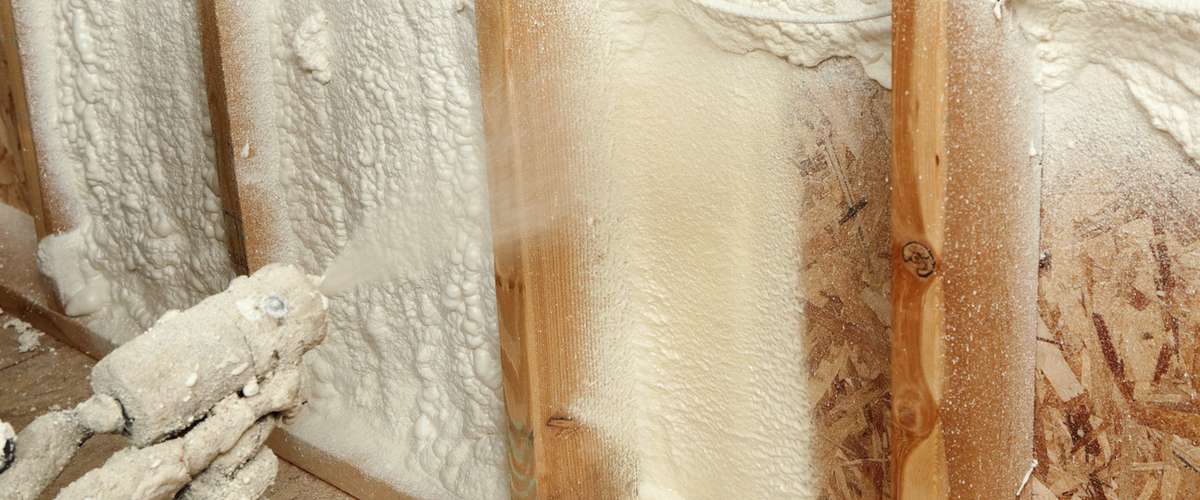















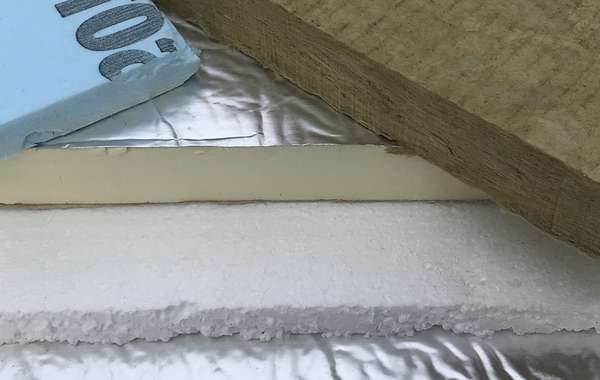
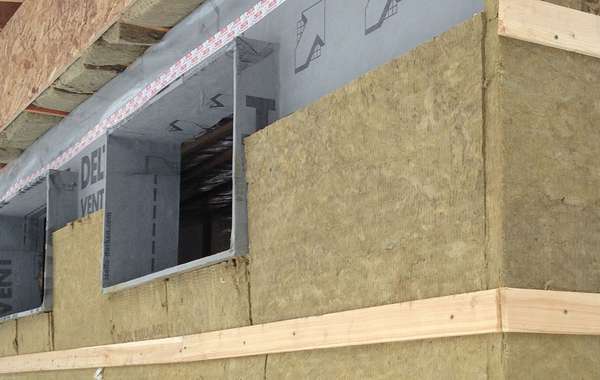
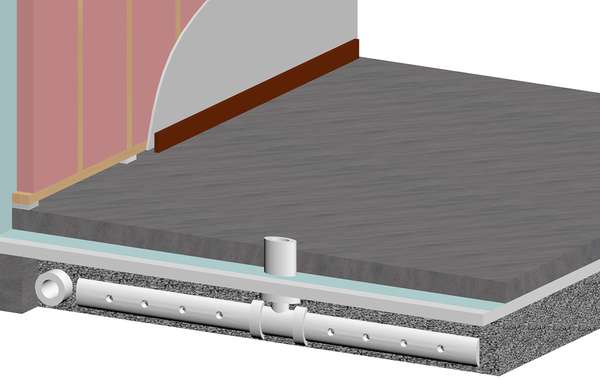
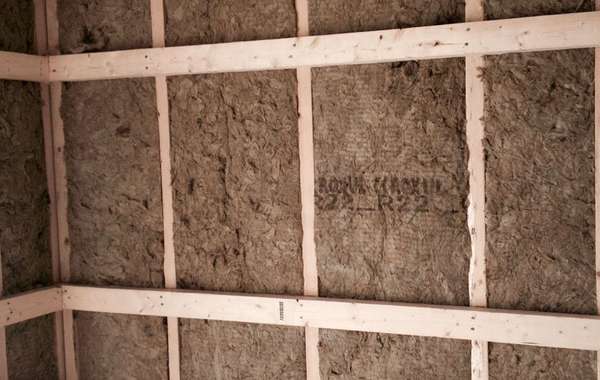
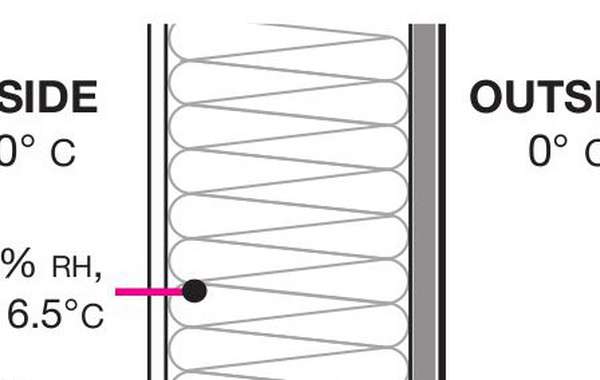
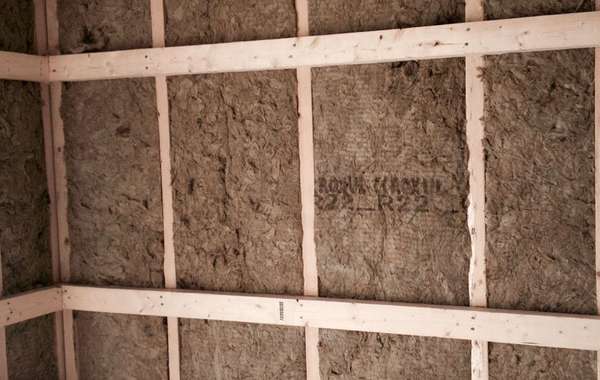
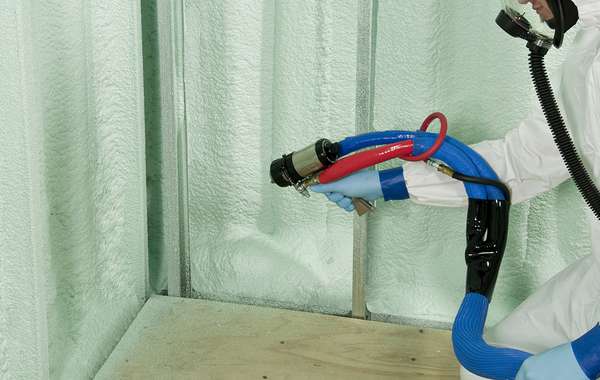
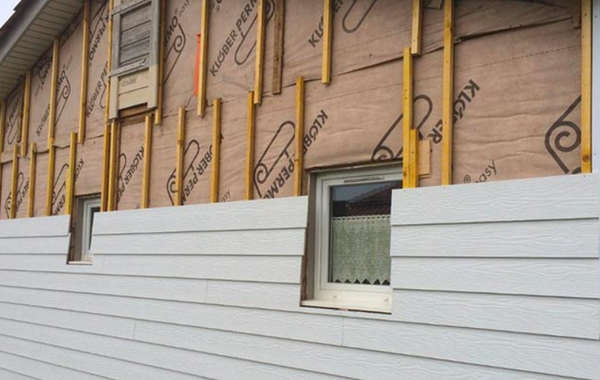
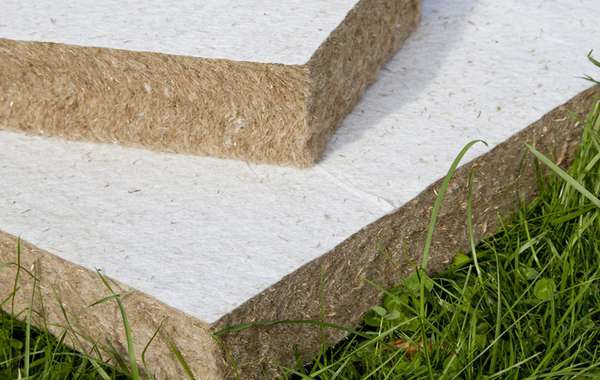
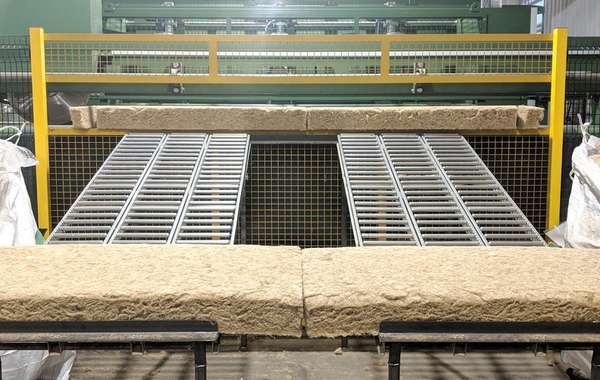
This article raises a number of points in very generic terms without context. A typical approach used when one is writting a narrative with a foregone bias arleady established. So as one who is active in the spray foam industry in the Canadian Market, I would like to clarify some inaccuracies here. 1) as a point of clarification, there are two types of foam typically used in construction that are a catagorized by density. Half pound open cell SPF and Two pound closed cell SPF that have the physical blowing agent (HFC or HFO) as noted here. In Canada all foam systems that wish to enter the market for sale must be tested by independend third party accredited laboratories in order to prove their physical properties meet established ULC standards of benchmarked performance charatcteristics of the cured final product. These include air permeance, vapour permience, compressive strength, tensile strength, off-gassing of VOC's, and many other elements. Millions of lbs. of foam are installed each year in homes around the globe. It is generally specified by architects due to its ability to provide high thermal resistance per inch, an integral vapour and air barrier material, AND the high compressive strength that can increase building rack and sheer performance as well as truss uplift resistance by up to 400%. All of the performances claimed have been rigorously tested over the years. CUFCA in Canada has lead the testing field of spray foam for the past 37 years and we publish our research reports on our website for access by design professionals. To only look at one metric of a material does it a disservice. It is not just the airtightness but the combination of all of it's performances which are typically superior to its market competitors that make it such an outstanding product choice.
1) Yes it is largely petroleum based chemicals that require it to be handled by trained and licensed professionals ( in Canada at least). We do not advocate it be sold to or installed by homeowners as a DYI product lacking the necesary PPE.
2) Yes end of life recycling remains challenging due to the very properties that make it an excellent air barrier and structural member. But lets keep in mind the life horizon of homes that we build. Occupancy could and should perhaps be measured in 75-100 years or more. The reduction in carbon use due to performance gains should be a defensible rationale dispite the end of use disposal means currently available.
3)与所有行业一样,会有一些安装不良的例子。但考虑到全球每年2磅的市场规模。封闭细胞SPF,经常参考的例子很少和之间。是的,糟糕的做工发生在任何房主身上都是不幸的。But we would suggest that the amount of happy homeowners that have sprayfoam installed correctly by property trained and licensed Contractors would be the vast majority.
Hi Andrew.
Thank you for taking the time to share your thoughts. You mention a "narrative with a forgone bias already established"; let’s look at that for a second - Ecohome is a building information website for North America with no skin in the game, and whose mission is to provide homeowners and builders with pertinent information to help them make sensible choices that lead to healthier and more efficient homes with reduced environmental impacts. The Canadian Urethane Foam Contractors Association on the other hand, that you mention, describes themselves as "the national association [for Canada] actively promoting the NUMBER ONE insulation product - spray-applied polyurethane foam.”
The information we provided above that you take issue with comes from the National Institute for Occupational Safety and Health (NIOSH), The Environmental Protection Agency (EPA), and spray foam manufacturers own safety data sheets for the plentiful quantities of DIY kits available for purchase across North America - either online or in local hardware stores, including Canada.
As for the three concessions you made that absolutely align with the article, you acknowledge that:
这三个问题正是本文的前提,所以感谢您的佐证。至于你所说的"百万磅。世界各地的家庭每年安装的泡沫”——也许是这样,但数量不等于质量,它只会使危险指数更严重的人使用它。美国过去每年使用80万吨石棉,他们认为其健康风险大于收益。
And regarding the risks associated with DIY spray foam applications, you say “We do not advocate it be sold to or installed by homeowners as a DYI product”, yet the shelves are full of such products and the internet is full of DIY spray foam instructional videos. Here is a quote from one particularly disturbing DIY spray foam video discussing the importance of mixing chemicals properly, viewed more than 3 million times -
“If you get a wrong mixture, sometimes you’ll get a clogged line or something, so if you get too much of one of the chemicals, and I can’t remember which way it is, you’ll actually get soft mushy foam. And if it goes the other way where the other chemical is too much, the foam is really brittle”.
作为代表这一行业的国家机构,我们想知道CUFCA是否采取了任何行动来教育加拿大人,并警告他们,未经培训的安装人员或DIY装置可能会给他们带来严重的健康风险?他们的网站或其他地方有没有发布公共安全警告?即使我们在这里发出这样的警告,你们承认我们的观点,但同时积极淡化对人类健康的风险,并指责我们有偏见。我们将让见多识广的读者来决定偏见在哪里。
Here is a short clip from one of the countless training videos that are out there and that causes us great concern. If it does for you as well, perhaps you’d consider working with us to warn people of the dangers of following such advice?
This article is so misleading and very biased
我们很高兴听到你的推理,如果你是从事喷雾泡沫行业的,请让我们知道你是做什么的。
I wouldn't say Ecohome has "no skin in the game", your Offical Partner listed at the end of this article is Owens-Corning, a fiberglass batt manufacturer.
Nic -我们有许多绝缘合作伙伴,生产各种材料的绝缘材料,多年来还有许多其他的合作伙伴,包括提供喷雾泡沫作为他们所提供产品的一部分的公司。我们不会改变我们的内容以适应任何制造商,我们也不会展示我们认为对生态更有害的产品。
谢谢你们,伙计们。我有点失望的是,在传统的代码构造中,我们又回到了讨厌的布线和管道,但我不再对喷射泡沫持怀疑态度。另一个令人担忧的原因是:必须有人制造、混合、运输和零售这些化学品。在每个阶段,工人都有不可接受的发生事故(泄漏、暴露)的可能性。我猜你对新建筑的空气密封技术也有同样的看法,比如航空母舰?
whoops! Just found this //www.esb-agile.com/guides/3364/aerobarrier-home-air-sealing-spray/
Hey Gary, thanks for the comment. I know what you mean about packing insulation around boxes, but I never found it to be that much more labour intensive, and I hated working with spray foam in all but very necessary cases. We always liked Rockwool for that since its so easy to cut and always left a clean job. These sample pics are from aninterior soundproofing how-to video, so you can see how easy it cuts. I'd way rather do this than spending a week waiting for spray foam to wear off, as it virtually becomes part of your skin if you get it on you.
As forAerobarrier air barrier spray- it doesn't have the same health risks from off gasing, so in that respect its not a concern to us, nor is there anywhere close to the volume of material being used in terms of raw materials. Aerobarrier spray is applied by pressurizing a house and filling the air it with tiny droplets that adhere to small openings to seal them. It only adheres where there is a hole and air escaping, so I don't know that you'd even see the stuff on a 2x6 during a house decomissioning decades later. So it wouldn't affect the future recyclability of materials.
Note - I would stay equally far away when its happening, but since it is only filling the tiniest of cracks or holes in an air barrier rather than *being* the air barrier like spray foam, the actual volume of material you are left with afterwards could perhaps be just a handful or two of 'actual' material. So even if it were toxic, any off gasing from the product left behind would hardly be a drop in the bucket compared to an entire house coated inches deep with spray foam. Thanks for bringing that up!
And to your other points - you're bang on about the chemicals. Yes, they need to be manufactured and transported, and yes mishaps do happen. I would rather hear a truck carrying batt insulation tipped over and dumped it's contents in front of my house rather than a truck carrying spray foam chemicals.
As mentioned in the article, there are places where even we feel spray foam is the right thing to use, but there aren't a lot of such cases so we're glad you're off the fence :)
nice
I found this article and the comments from both sides of the aisle here very helpful to read. If this is still an active forum may i ask a few questions to any kind soul who might answer. I have a unfinished second story on my home and the first floor has been finished and insulated with roll in insulation for nearly 3 decades. The second story is a beaufitul waulted ceiling with teo large dormers, about 900sqft. I myself try to avoid everything toxic i can and practice moderation in all aspects. Right now to avoid lowering the ceiling and get a tighter seal on the home due to in adequate A/C and heat that will not potentionally be taken care of for multiple years when an addition is done which includes second A/C and furnace for the new expanded second story. RIght now i'm leaning towards 3" Closed cell on my vaulted ceilings, 2" on the dormers, and tradtional insulaiton in knee walls and the two main walls under the gables at each end. ONE very importantly due to being torn down a the addition date to add on to the home.
1) will my homes combination of closed cell and tradtional insulation protect me from some of the "air tight" problems a complete closed cell foam home can have including the off-gas?
2) are there alternative to put in a ceiling with 6-8in rafters i don't want to bring down farther?
3) IF installed correctly by proffesionals will my installation hypothecticall be adequately "safe"
4) what question do i ask to confirm this CCSF is the new variety? and i understand tha new variety has 1400 times less impact on Global warming but is the end product actually safer for my family?
5)这个空间将是一个开放式的主套房,我和我的伴侣将在这里度过我们所有的夜晚和无数个小时。这真的是正确的前进道路吗?
I was actually suprised from a large installer in my area quoting a rate under what i expected and they seemed quite proffesional... Is getting them to garauntee a safe instalation enough?
Thank you for anyone taking the time to respond.
我是华盛顿州的注册总承包商。我发现这篇文章和评论总体上很有帮助,信息量很大。我正在装修我购买的一栋建于1933年的房子。壁上的空腔目前是空的。我有各种各样的产品,包括喷雾泡沫。有没有人会推荐一种绿色的“钻补”方案?谢谢!In community, Joy
Hi Joy, have you thought of using cellulose? Here is an article aboutdense packed cellulose in walls. In the older days it used to settle over time and leave the top portions of walls uninsulated, but in modern times with being blown into walls very densely it doesn't settle. Hope this helps!
My goal is to have small size, passive home build that is made with as little environmental impact as possible and not contributing Planetary Boundaries breaching. Spray foam, when looking at it from this point of view is a large negative for the planet.
有趣的文章,但是,它没有谈论更大的热性能,高r值,结构强度等喷涂泡沫绝缘。作为一名多伦多喷雾泡沫安装专家,我知道它主要是基于石油的化学品,这就是为什么在加拿大,它是由训练有素和有执照的专业喷雾形式绝缘专家处理的。糟糕的安装会导致问题,但是如果专业人士正确安装,好处是很多的。
我认为这些关于喷雾泡沫的观点已经被行业营销很好地覆盖了你认为是卡尼卡吗?这就是我们从制造商那里听到的所有关于喷雾泡沫的信息,而仅仅提到健康风险,就会让像你这样的专家试图把话题转回到所有好的东西上。
其他形式的绝缘材料如果没有正确安装,不会带来危险的健康风险,也不会使住宅不适合居住,所以听到行业拥有这些事实并向他们的客户提及会很高兴。在安装后,你会向你的客户提出哪些关于空气质量可能受到的负面影响的警告?
很棒的帖子,谢谢分享。
Thanks David. Sorry I had to remove the link to your spray foam website, we don't allow those in comments. Nice to hear agreement from an industry professional and thanks for taking the time to write.